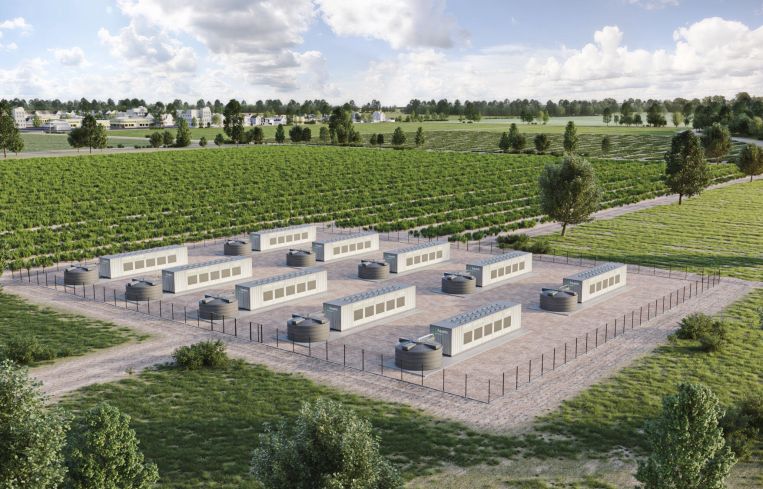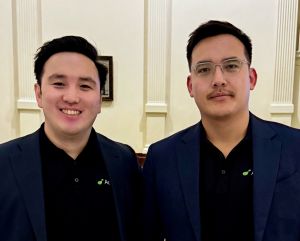Proptech Startup Aquaria Building Water-From-Air Technology
Nascent company secures $112 million in funding while seeking more residential clients
By Philip Russo May 6, 2025 8:30 am
reprints
What if a proptech startup could create clean water out of thin air?
Well, Austin-based Aquaria believes it has created an efficient and economical technology to convert atmospheric and indoor vapor into clean water for households.
“I’ve been thinking about our water challenges for quite a long time,” said Brian Sheng, CEO and co-founder of Aquaria, along with his brother, Eric Sheng, the chief operating officer. “Actually, I wrote my thesis research at Princeton on water and energy infrastructure. When I exited my previous company, I was thinking about some of the problems that we face today that I wanted to contribute and spend my time on. So accessing more water, and all the problems that we see today with more developments and extreme weather, was a very large problem that we need to devote more attention to solving.”
The result is Aquaria, which is building an air-water infrastructure that harnesses excess humidity in the air and condenses it into clean drinking water, alleviating reliance on centralized, municipal water systems. Aquaria claims that its atmospheric water generators (AWGs) use patented technology to be the most energy-efficient and cost-effective devices on the market. Its systems are modular and scalable, according to the company, and can accommodate any size project from single homes to large-scale communities and developments with existing water supplies.
Such technology is rare in the built world, but Aquaria has convinced some major venture capital players to back it. Three years after its founding, in November 2024, Aquaria announced it had secured $112 million in funding from investors Mistletoe, Ciri Ventures, Soma Capital, HF0, Bow Capital, Umami Capital and (apparently) former U.S. House Majority Leader Dick Gephardt. Aquaria is using the funding to expand its commercial reach to more qualifying projects and further develop its technology.
In addition, Aquaria was named one of Time magazine’s Best Inventions of 2024 after the startup announced a $26 million project in Hawaii that will see 1,000 homes installed with Aquaria devices, eventually producing 260 gallons of water a day.

“We are mimicking the morning dew process,” said Sheng in explaining the technology. “Whether it’s morning dew or it’s a hot day, there’s lots of water vapor in the air around us. By mimicking that and doing it on a large scale — absorbing lots of air, turning the vapor water in the air into liquid water that’s stored in a water tank — we clean it to the highest drinkable water quality.”
Currently operating primarily in Texas and Hawaii, Aquaria believes its model can be expanded quickly and widely, Sheng said.
“Last year we built the first home in the world where you open your tap water and the water is being supplied from the sky instead of from the ground,” he said. “Since then, we’ve supplied about 120 units to customers around the U.S.
“Right now, we are primarily targeting residential communities. So essentially, each home will have an Aquaria air-water generator together with a water tank connecting to your plumbing system, so that when you shower, when you cook, you have the choice of getting your normal existing water — which could be your well water or city water — or you can quickly get water from the air instead.”
An early adopter of Aquaria’s technology is The Paulele Hale Association (TPHA) in Hawaii, a developer of affordable climate-resistant housing.
“For over eight years, TPHA has worked to design affordable, climate-resilient housing for Hawaii’s future,” TPHA co-founder David Gilliland said in a statement. “One major obstacle: access to water, which makes or breaks a property’s value. In many rural areas, housing projects are stalled by the lack of municipal water systems.”
The solution, according to Gilliland, is decoupling water from land.
“After deep research, we identified Aquaria atmospheric water generators as a scalable, energy-efficient way to produce clean water from air,” he said.” These systems are now integrated into our developments — supporting individual homes and community micro-utilities. In partnership with local water departments, we’re also exploring hybrid systems as alternatives to expensive deep wells. As drought expands, this technology will be essential to unlocking housing across Hawaii.”
According to Aquaria, its project pipeline includes a water-bottling plant in the Caribbean that can produce 200,000 liters daily; an 18-building apartment complex spanning some 350 units in Texas; 96 condo units averaging more than 6,000 square feet each in Mexico; a 300-home residential development in Texas; a 50,000-liter-a-day pilot solar-powered water-bottling plant for construction crews in the Middle East; and an agricultural water supply of 100,000 liters a day in the same region.
The cost for a homeowner starts at $10,000 for an outdoor unit, or $3,500 for an indoor unit, said Sheng. The cost difference is because, “The indoor unit produces way less water — up to 24 gallons of water per day — but the outdoor unit can produce up to hundreds of gallons of water per day,” Sheng explained. “That’s the difference. It has to do with the production amount.
“We have these vents on the machine where it’s sucking in air. A bigger machine is needed outside to create hundreds of gallons of water a day because you need the free-flowing air outdoors. But, at 24 gallons a day, the air inside the house is sufficient. The machine sucks the air in your house, and then it creates clean water from that. So the same process — just the outdoors is much, much bigger.”
Philip Russo can be reached at prusso@commercialobserver.com.


